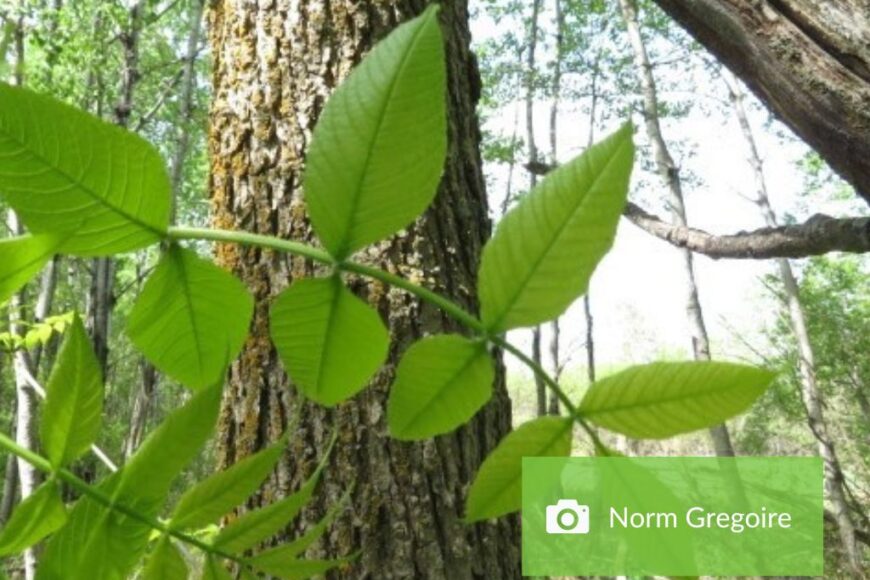Dawson Trail Dispatch, written by Norm Gregoire, February 2023
Page 21 https://issuu.com/dispatch222/docs/dawson_trail_dispatch_february_2023
In the winter, most at-risk species in southeastern Manitoba have either migrated south or are hidden under deep snow. No matter how cold or how much snow we receive we can always rely on having the chance to observe at least one species at risk: the black ash tree.
If you are in search of black ash, good places to look would be undisturbed wetland areas near rivers, swamps, and fens. Here they can live 150 to 300 years. Black ash can also be found in urban settings, and this is where they can be misidentified as the non-native Manchurian ash. The bark of Manchurian ash has a more tan-coloured appearance compared to black ash which is greyer. All Manitoban ash trees have bark with a corky texture to it. Green ash is another native species in Manitoba that may cause some identifying issues. For me, the easiest way to make a proper identification is in the summer, where you can count the leaflets per leaf. Black ash usually has 7-11 and green ash usually has 5-7.
Although black ash are large trees, growing from 15-25 meters tall, one of the biggest reasons the population is falling is because of an insect no bigger than a grain of rice: the emerald ash borer beetle. Where present, this non-native insect causes a more than ninety per cent mortality rate on trees. Across eastern North America, tens of millions of trees have already been lost due to this beetle and there are no signs of it slowing down.
The cycle between beetle and tree begins when the female ash borer beetle lays eggs on the bark of a tree. Once the eggs hatch the larvae bore into the tree bark to feed on these layers. They may stay here for up to two years before emerging as adults. When the adults leave through the tree they leave behind a “D” shaped exit hole. During this entire cycle the tunnels that the beetle leaves throughout the tree cut off water and nutrient supply for the tree, killing it in a matter of years.
The adults can fly short distances and then continue this process over again, but this is not the only way they spread. A common way for the emerald ash borer beetle to expand range is when humans move wood from one area to another. I believe most of us who have spent time in the outdoors- in Manitoba parks- have seen the signs warning not to move wood. It is up to us to follow these guidelines and work towards keeping this invasive beetle contained and our forests healthy.
Event: Snowshoe Tour in the Tall-grass Prairie
All are invited to partake in a free snowshoe tour focusing on how tall-grass prairie species survive such harsh winters. We will also be looking for sign of wildlife that is still active. The tall-grass prairie is an explosion of life in the summer months. During the winter season wildlife must find a way to survive, there is much to discover!
If you have ever wanted to try snowshoeing now is the chance! Snowshoes are provided, all you need to bring are winter boots and weather appropriate clothing. This event is taking place Saturday, February 11th from 10am to 12pm (weather depending). The tour starts from the Agassiz Interpretive Trail, 7km west of Vita on highway 201.
Please contact Norm at sarcommunityliaison@gmail.com to register or for more information.

